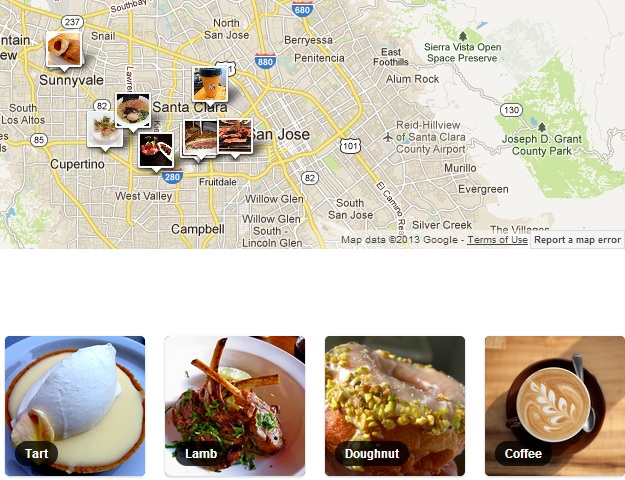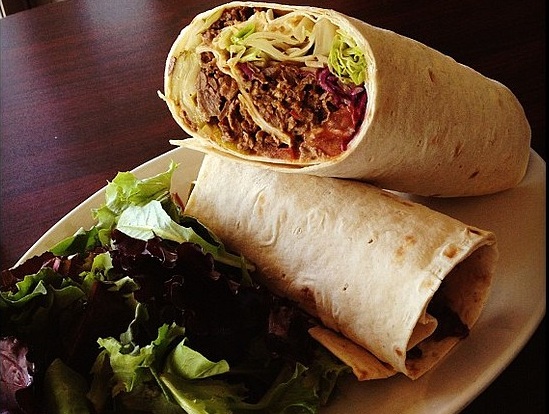Want smarter insights in your inbox? Sign up for our weekly newsletters to get only what matters to enterprise AI, data, and security leaders. Subscribe Now
 I love OpenTable. I use it all the time to make restaurant reservations. In fact, my lunch today was booked through OpenTable.
I love OpenTable. I use it all the time to make restaurant reservations. In fact, my lunch today was booked through OpenTable.
That’s why I’m excited to see that OpenTable is acquiring Foodspotting and has named Foodspotting CEO Alexa Andrzejewski as its chief user interface designer. That gives me hope that the Web site — which looks like it was last redesigned in 1999 — will finally be updated.
But as a friend asked me, “Does it matter to Open?” “Not really,” I said. “So, really, you should decry them for wasting the money,” he responded.
OpenTable brings the product designer and the business guy in me into conflict. It is one of the rare companies in the consumer Internet business where design doesn’t seem to matter a whole lot. (Disclosure: I’m invested in $OPEN and have made a nice return so far.)
There are many, many ways to improve the OpenTable product experience. Here are a few just off the top of my head.
- When you first visit the site, you’re given a list of all of the markets it does business in. How long have Internet sites been using IP-based geolocation?
- I can’t set a list of preferred neighborhoods. Every time I want to search for restaurants, I have to select the 3 or 4 neighborhoods in San Francisco that are convenient to me.
- Despite the fact that OpenTable has menu data on many restaurants, I can’t search for a specific dish.
- It asks me stupid questions like, “Is this your first time at this restaurant?” when I’ve previously made many, many reservations through OpenTable at that restaurant.
- It doesn’t incorporate and highlight reviews of my friends who also use OpenTable. (Hello, social search?)
OpenTable has some of the best data out there on restaurants. It has a higher frequency of reviews than Yelp. (Disclosure: I’m short Yelp and think it’s almost as evil as Groupon, which I’m also short.) But it hasn’t focused on building out the product.
A great restaurant-booking tool would incorporate lots and lots of pictures (the screen capture above shows a bit of what Foodspotting’s site has to offer on this front). Dining is not always about food. It’s also about scene. Although OpenTable is unlikely to have true dives (dives generally don’t take reservations), I may be in the mood for a romantic place, or a place to take kids, or a place for a business lunch. OpenTable has filters that allow you to drill down, but definitions of those terms can be highly subjective. Give me 10 photos and I can make a better decision than reading 100 Yelp reviews.
Yes, OpenTable has built out its mobile apps. And those apps are damn convenient. They help address some of the location issues I cited above.
That OpenTable’s user interface sucks is no secret. People mention it to me frequently when talking about local products.
That’s when I put on my business hat. “So what’s your alternative? What are you going to do, call 10 restaurants and check their availability?”
OpenTable hasn’t improved its product because it really hasn’t had to. I call it the reverse Ticketmaster. I don’t know what Ticketmaster spends the insane fees it charges on, but it’s clearly not IT. It’s about as user hostile a Web site as they get. Search tools are terrible. Live Nation even requires you to solve an ad captcha.
Ticketmaster collects its fees directly from consumers. OpenTable collects its fees from restaurants. For each reservation booked through OpenTable’s site or apps, OpenTable charges $1 per seated head. So if four people show up, the restaurant pays $4. (This is in addition to monthly fees for using OpenTable’s electronic reservation book.)
OpenTable has become so dominant in some markets that if you’re a mid- to upper-tier restaurant and you’re not on OpenTable, you might as well not exist. For me, if you’re not on OpenTable in San Francisco, you’re not usually in my consideration set.
I’ve heard some restaurateurs grumble about OpenTable like I grumble about Ticketmaster. They think that OpenTable has become a tax on the restaurant ecosystem. Instead of bringing in incremental customers, OpenTable is just making it more convenient for existing customers, and the restaurants are having to pay for it.
Among the various marketing tools available to restaurants, I consider OpenTable to be the best. Print? Big spend, no accountability. Groupon is almost always a bad deal for restaurants. Yelp’s sponsorship packages are always a bad deal for every category of business. Although OpenTable’s $1 a head may sound expensive, it’s cheap for performance-based advertising as a percentage of spend. Even if only half of the business is incremental, $2 a head is still cheap. With Yelp, if you could accurately track it, you’d find the comparable number to be $100 or more. (Yelp generally charges on an impression basis, at an insane $600 CPM and then delivers terrible impressions.) If you’re going to spend money marketing a reservation-taking restaurant, OpenTable is the best place to do it.
But being perceived as a tax and not as a service should be a real worry for OpenTable. That’s where I think you can truly marry design and business to create a better experience for both diners and restaurants. A better-designed product would use the data that OpenTable has to drive incremental business for restaurants. And that means incremental revenue for OpenTable. Some examples:
- Here are places that your friends have eaten at recently and rated highly.
- We see that you’ve never tried Greek food. Here’s an offer for an appetizer at Kokkari Estiatorio. Because OpenTable is the reservation system, you don’t even have to deal with coupons. A note would be automatically entered in the reservation.
- Daily specials from your favorite restaurants.
- Restaurant Week is coming up. Here are your friends who have expressed an interest in restaurant week.
- Premium-priced dinners with chefs.
I met with OpenTable CEO Matt Roberts last year and discussed some of the company’s product challenges. (Not, as you might expect, over a meal.) He acknowledged that there was some work to be done on the product.
With Foodspotting, he has acquired a design team that can help turn a boring and dated utility into something that helps enhance the overall dining experience. That’s something I’d raise a glass to.
Rocky Agrawal is an analyst focused on the intersection of local, social and mobile. He is a principal analyst at reDesign mobile. Previously, he launched local and mobile products for Microsoft and AOL. He blogs at http://blog.agrawals.org; and tweets at @rakeshlobster.


